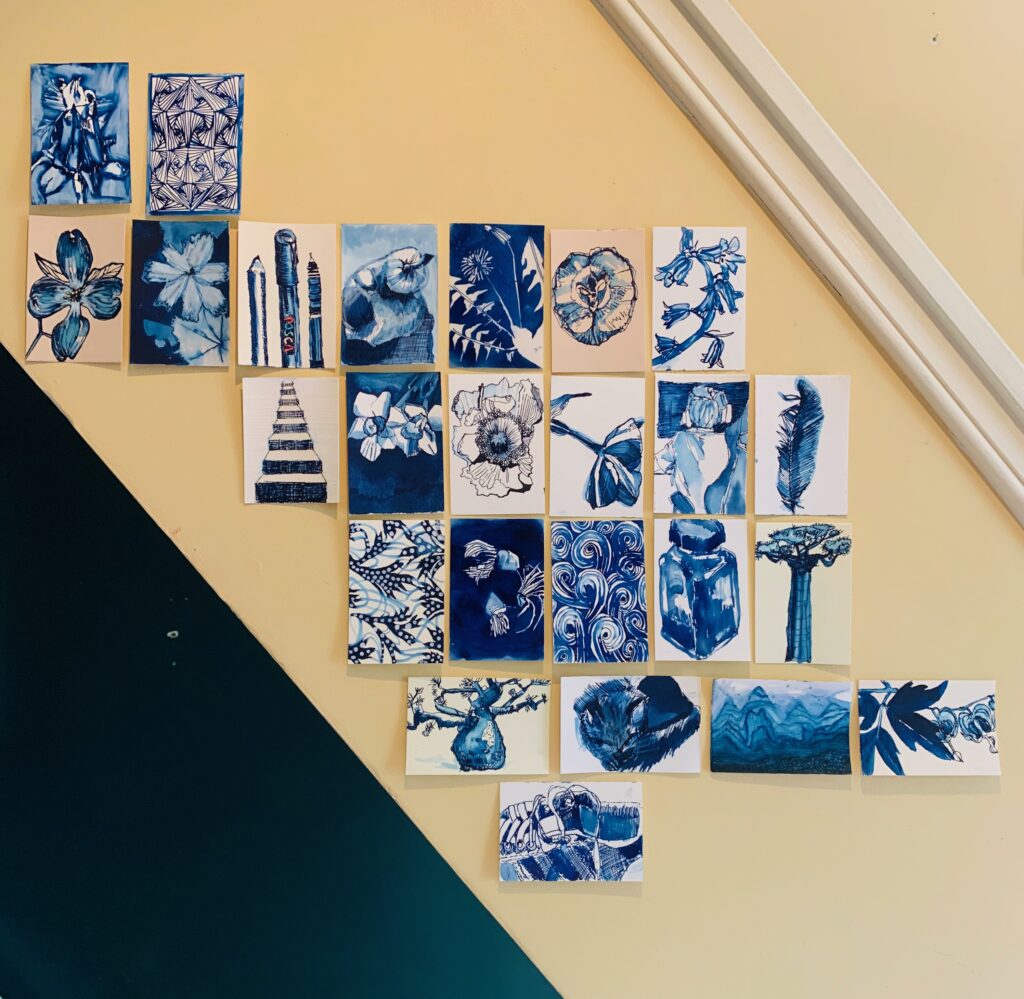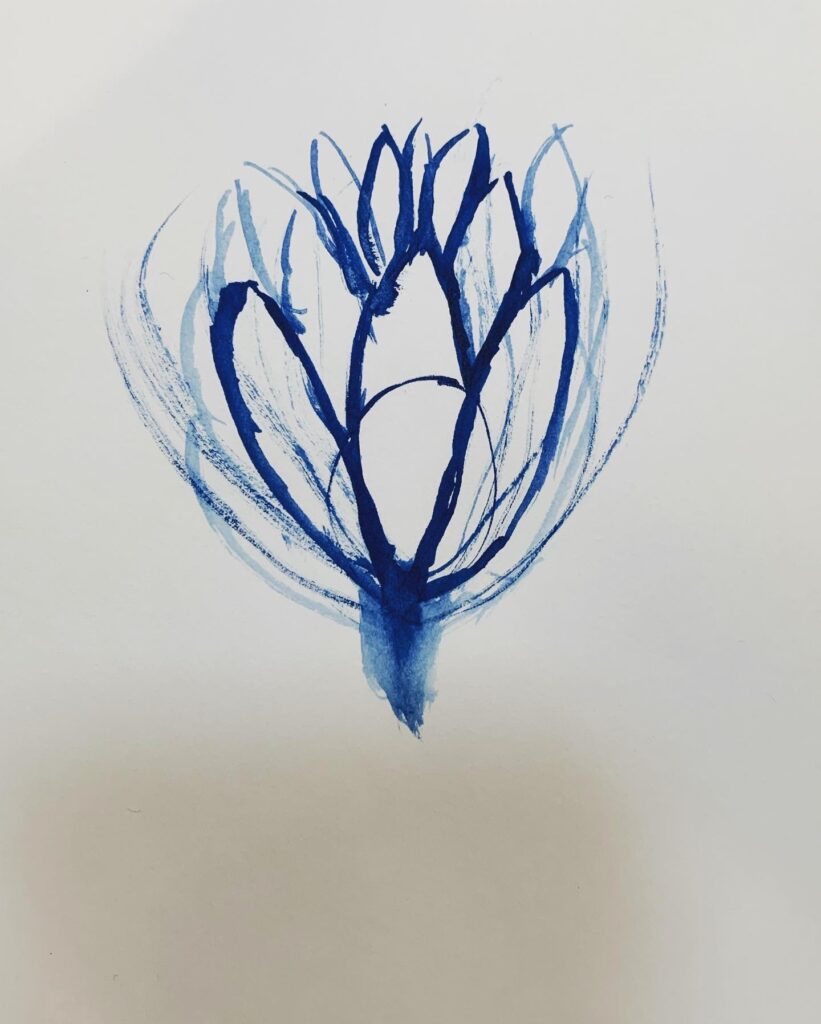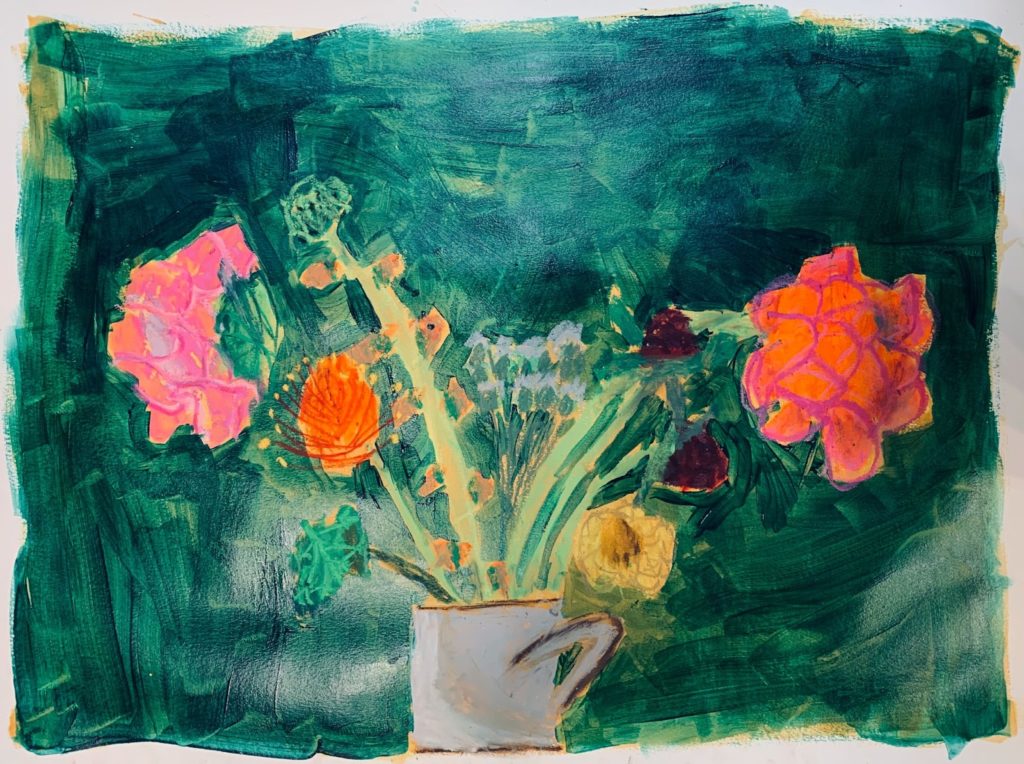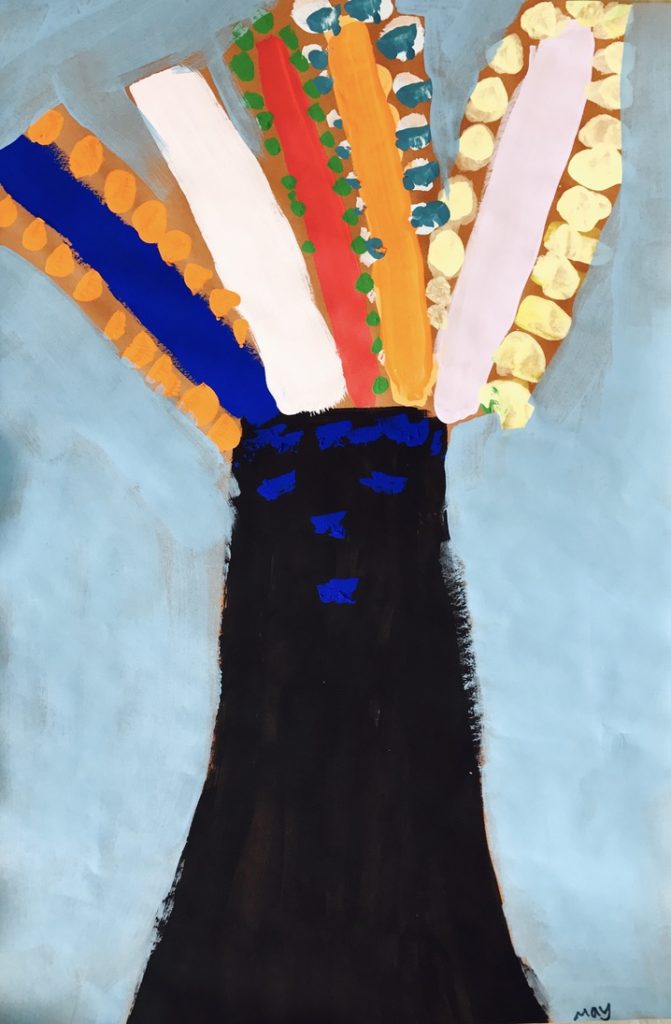Feel the Focus
Artwork above by Sondra Spencer
Post written by Rachel Arnot Rockwell
School events, spring parties, games, end of year parties, spring concerts, work gatherings, graduations… spring brings a bustle of activities all meant in the spirit of eventful celebration. It is a time to celebrate! Even before the pandemic, spring hailed a breath of fresh energy after long, cold winters. The idea that spring allows new growth and life is exciting.
All that excitement can often lead to overwhelm as events from every facet of our lives collide with each other and make it hard to celebrate any one thing without being busy planning the next thing. Last week we talked about how the creative process can help foster presence in our daily activities. Taking a moment to breathe and concentrate on one thing brings us to a centered position that permits us to appreciate the exact moment we live, and it allows us to FOCUS!
Focus is one of the outcomes of committing to the creative process. If you really consider the term, creative process seems like an oxymoron. We think of “creative” as going outside the lines, letting our minds imagine and develop new ideas. We think of “process” as a structured, linear method for accomplishing something. In fact, it is crucial to put these two concepts together in order to fully feel the focus!
This week, during the busy month of May, try an activity that will help you keep track of your days creatively. When you have completed the process, you will see abstract evidence of all that you’ve accomplished in this busy time. As the calendar fills with activity, allow yourself to spend a minute or ten focused on drawing. You will likely notice the activity threads your days together in a beautiful compilation that can be physical evidence of what your focus can create.
Resources:
TRY THIS: FOLD & FILL TO FEEL THE FOCUS!
Fold a blank sheet of white paper in half length wise, then in half width wise, in half again, and then one more time, until you have 16 blank spaces on your paper. Crease the edges to really delineate each space. (This is your structure!) For the next 16 days, spend a chunk of time drawing within one blank rectangle. (This is your creativity!) Use color, black and white, pencil, whatever feels right on any given day. Focus simply on that one space each day. If you struggle pay attention only to the one blank space, refold the paper so you can only see the day’s plot. After 16 days your sheet will be full. You will have created for over two weeks, developed a habit of creativity that can help you focus and develop the creative process.

“Drawing a Day” by Genie Arnot



